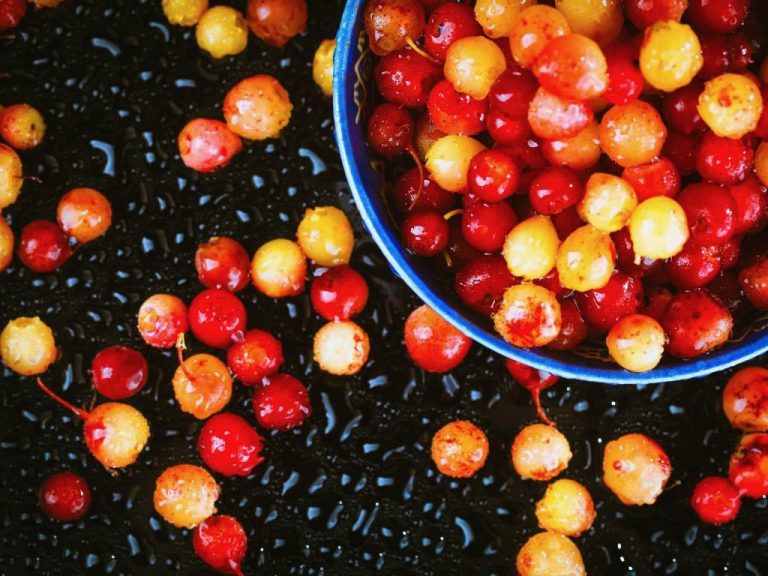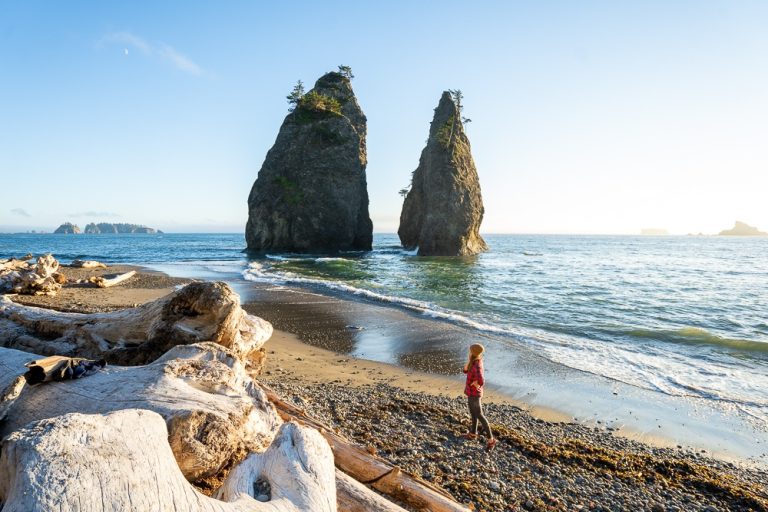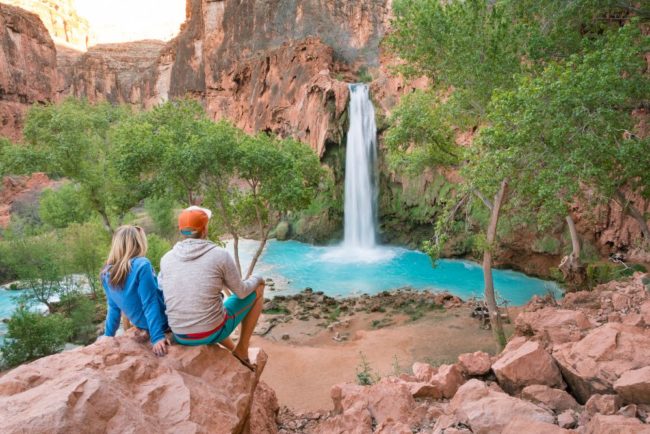
Explore the West of Tokyo
The most noteworthy attractions that you should visit in this ward would have to be the following:
As the country’s tallest peak, it has been considered one of the most iconic sights in Japan so it would be a good idea to temporarily escape Tokyo’s bustle and dedicate this day to a bit of nature.
- For attractions
- ★ Shibuya Crossing: Found in front of the Hachiko Exit, this is arguably the most prominent landmark of the district and the most photographed spot in the area. If you want to get a good view of it, go to the QFRONT building where a big Starbucks cafe is found. It’s best to come during rush hour to see an impressive sight but be prepared for crowds inside the cafe. TIP: If you want a higher bird’s eye view, prepare your zoom-in lens and go to Shibuya Hikarie shopping mall’s Sky Lobby on the 11th Floor.
- Hachiko Statue: Hachiko is the name of an admired Akita breed dog in Japanese culture back in the 30s who exemplified superb loyalty to his owner even after his owner’s death. Up to this day, Hachiko has been remembered for these amazing traits and that’s why this bronze statue of him in front of Shibuya Station remains to be a well-revered point in Japan. With that, don’t forget to stop by here for your Tokyo itinerary! ALTERNATIVE: For a lesser crowd, there’s a bigger statue of Hachiko along with his master, Professor Ueno, at the grounds of UTokyo or the University of Tokyo.
.
- For quirky fun
- Karaoke: You must NEVER leave Japan without trying a typical Japanese karaoke! If you’re not from Asia, karaoke is NOT like the ones that you see in Europe or in the USA where the person goes on stage and sings in front of strangers in a bar. Asian karaokes are more personal and ‘closed’ so you can unleash your singing powers in a sound-proof room with people that you actually know (or you can also go alone). Of course, these Japanese karaoke rooms are high-tech and are even well-decorated depending on the place you go to. They might even provide free costumes so you can cosplay while singing your heart out! (And yes, they have English songs — some of them even have Filipino tracks).
- Love Hotel Hill: This is where you can find the biggest concentration of love hotels in Tokyo, and though it’s not a typical item on a ‘things to do in Tokyo‘ list, it can be an amusing thing in itself especially if you’re traveling with your loved one — largely because of how the rooms are delightfully themed. Just be warned though that some love hotels don’t accept same-sex couples or even two foreigners. Nevertheless, you can rest in a room for 1-4 hours at around 1,500 yen ($15~) per hour or stay in a room overnight for as low as 7,000 yen ($68~).
.
- For nightlife
Two of the most brilliant clubs would first be the mammoth super club ageHA with over 4 dance floors, an outdoor pool, and an outdoor dance tent; and second, the laser-filled Womb club with its identifiable giant mirror ball. TIP: Better yet, get this Tokyo Nightclub Pass that grants you UNLIMITED entry to the top 7 nightclubs in Tokyo!
. - For shopping
- ★ Don Quijote (for everything under the sun), Loft (for stationery), and/or Tokyu Hands: These shops are great to include in your Tokyo itinerary if you’re looking for cheap souvenirs, novelty items, stationaries, and more! The Shibuya branch of Don Quijote is the biggest in Japan so make sure to drop by there.
- Center Gai, Koen Dori, Spain Slope, and/or Shibuya 109: The first 3 are distinct shopping streets in Shibuya, whereas Shibuya 109 is a complex that you don’t want to miss out if you want to do some serious shopping!
- Shimokitazawa: This nearby district is a great ‘bohemian’ spot if you’re looking for vintage and second-hand items and clothes.
It’s time to check out Mt. Fuji or ‘Fuji-san’ (it’s how the locals commonly call it).
- For attractions
- ★ Senso-ji Temple and Asakusa Shrine: Take note that a shrine is dedicated to the Shinto faith, whereas a temple is dedicated to Buddhism. These two places are the main highlight of Asakusa with Senso-ji being the oldest temple in Tokyo. There is also an impressive “Thunder Gate” called Kaminarimon (which is a symbol of Asakusa and Tokyo) in front of the temple.
- Sumida River and Park: For a leisurely stroll during your Tokyo itinerary, go over to Sumida River and lounge by Sumida Park which stretches on both sides of this body of water. Like what you’d expect, there are cherry blossoms here that come alive in spring, and then during July on its last Saturday, this becomes a great spot for viewing the Sumida River Firework. (If you see a golden building with an odd golden structure on top that looks like a teardrop, that’s the Asahi Beer Tower with its ‘Asahi Flame’.)
.
- For activities
- ★ Kimono rental: This is your chance to try on Japan’s elegant traditional wear: a kimono! Putting on a kimono can be VERY intricate, but don’t worry because there are rental shops spread out throughout Japan (catered both to men and women) that let you wear it outside for a day for a price that starts at 3,000 yen ($25~).
- Samurai Armor rental: You can take a step further and rent to wear Japan’s famous traditional warrior’s (samurai’s) armor! If you book this activity online, you can even have a professional photographer take photos of you.
- Rickshaw ride: To complete your kimono look, I recommend that you rent a traditional Japanese rickshaw which will take you around key spots in Asakusa.
- Tea ceremony: Highly influenced by the principles of Zen Buddhism and a well-respected hobby, the Japanese Tea Ceremony (also known as the ‘Way of the Tea’) is a traditional cultural activity that is elaborate and refined, and in which matcha or powdered green tea is prepared and drunk by a host. To be frank with you: this is a very long ceremony where you will sit motionless for hours as you follow a set of guidelines… but it is a striking example of Japan’s amazing culture that is exceptional for immersing one’s self. For a good place to try this in, go here.
- Hanayashiki: If you’re up for it, this is said to be Japan’s oldest amusement park (built in 1853) and it can be a quirky thing to do on your Tokyo itinerary.
.
- For food and shopping
- ★ Nakamise shopping street: Stretching at about 250 meters from Kaminarimon to the main grounds of Sensoji Temple is this picturesque shopping street with over 50 shops that offer local specialties and the usual array of tourist souvenirs.
- Shin-Nakamise: Also called “New Nakamise”, this runs perpendicular to the Nakamise Shopping Street and is in line with various shops and restaurants.
- Asakusa Kagetsudo: This is a famous melon-pan store that has been running since 1945. Melon-pan is basically a sweet baked bread with an outer layer that looks like a melon — so it’s just named that because of its appearance and not because it tastes like a melon. When you buy from this store, it is best to eat it when warm.
Below are other interesting day trips that you can do for your Tokyo itinerary! Below are other interesting day trips that you can do for your Tokyo itinerary! Below are other interesting day trips that you can do for your Tokyo itinerary! Below are other interesting day trips that you can do for your Tokyo itinerary! Where to sleep in Roppongi?
- SOUTH OF JAPAN
- ★ Kyoto: Naturally, this historic place is a given and it can be easily reached via the shinkansen or bullet train.
- Osaka & Nara: Osaka is known for its nightlife and street food, whilst Nara is for its deer parks. See this Japan itinerary guide for what you can do.
- Hiroshima: Mainly well known for its aspirations of tranquility with its Peace Memorial Park, this page can help guide you on your top must-dos.
- ★ Kinosaki: Located about 3 hours away from Kyoto, this is a pleasant onsen town that has a great atmosphere. I stayed here before for 2 nights and I loved strolling around the town in my yukata and geta (wooden clogs), feeling like a local! After all, everyone (locals and foreigners alike) who visit the town almost always wears the same attire when going about the place onward to the public baths — so it’s quite a sight to see. Truly a great addition to your Tokyo itinerary!
- ★ Okinawa: As Japan’s southernmost prefecture, this is often a choice destination for locals during the summer due to its abundant marine wildlife, pristine beaches, and beautiful coral reefs. Consequently, snorkeling and scuba diving are the top main activities when on these islands.
- Himeji: This place is most famous for its Himeji Castle which is typically considered to be Japan’s most beautiful surviving feudal castle. Because of this, it is both a UNESCO World Heritage Site and a national treasure.
- Kobe: As the capital of Hyogo prefecture, I guess the first thing that pops into your mind now is the popular mouth-watering Kobe beef, a famous local brand of wagyu (Japanese beef) meat. Truth be told, you can eat Kobe beef in any restaurant around Japan that is accredited to sell it so you don’t necessarily need to go to this place — however, if you’re a true aficionado, this place is great to see! Either way, as a port city, Kobe is well-liked not only for its tasty local beef but also for its sake breweries, Mount Rokko, Chinatown, Harborland, and more.
- NORTH OF JAPAN
- ★ Hokkaido: With magnificent unspoiled nature, Hokkaido is a haven for a lot of outdoor lovers, most especially during winter time as it is a great place for skiers and snowboarders (most especially the ski resort town of Niseko). Moreover, the capital of Sapporo holds an annual Snow Festival which features large snow sculptures. Of course, Hokkaido doesn’t disappoint in spring and summer either with attractions like Kamiyubetsu Tulip Park, Furano lavender fields, Tenjin Wisteria, Sapporo Lilac Festival, and more.
- ★ Niigata: This is a prefecture within Chubu or Central Japan and it is one of the country’s top culinary and getaway hotspots. I went on a travel spree here before and I loved my stay! To see a complete itinerary guide, see here.
- Nagoya: Also found within the Chubu region is Nagoya which is known for its towering castle. Other notable sites are as follows: Korankei, City Science Museum, Atsuta Shrine, and Railway Museum. For food, check out Sekai no Yamachan, a famous izakaya (Japanese pub) in the city that serves flavorful “legendary chicken wings”.
- Kanazawa: This is the capital of the Ishikawa prefecture and it boasts historical attractions as well as its ‘Kenrokuen‘ — said to be one of the 3 best landscape gardens in Japan.
- Kiso Valley: Nestled within Nagano prefecture is this valley which holds an ancient 70km trade route called Kisoji which was later on combined with other routes forming the 500km long Nakasendo. Today, nearby post towns of Magome, Tsumago, and Narai are flocked by visitors not only to hike through the Nakasendo but to also revel in the traditional stone paths and wooden buildings of these quaint towns.
- Matsumoto: One of Japan’s finest cosmopolitan cities that still have that rural feel. Rest assured, this is the kind of place that can keep you occupied, with its stunning castle, captivating districts, and enchanting vistas.
- ★ Shirakawa-go: There is no shortage of picturesque traditional villages in Japan and some of the best from them all would be the UNESCO World Heritage Sites of Shirakawa-gō and Gokayama.
- For more info, read here.
- ★ Takayama: If you’re looking for a thoroughly old and authentic traditional Japanese village, traveling to the city of Takayama in Gifu Prefecture is a must. Truth be told, due to its well-preserved antiquity, it has earned the title of being Japan’s “Little Kyoto” — a title which I agree with!
- Things to do in Takayama
- Tateyama Kurobe Alpine Route: If you’re up for incredible and unique nature activities in Japan, it’s a MUST to visit the stunning mountain sightseeing route that’s commonly referred to as the “Roof of Japan”. A crowd favorite as of late is its grand ‘Snow Wall’ that’s open from mid-April to late June! For more info, read here.
- ★ Yamanouchi: This is a municipality in Nagano prefecture that has the below notable attractions…
- Jigokudani Monkey Park: Have you ever seen those adorable photos online of monkeys bathing in a natural onsen (hot spring)? Well, this is the place where you can find them! The monkeys are called Japanese Macaques or ‘Snow Monkeys’ and they are very accustomed to humans so you can watch them play up close in this park (which is their natural habitat). The park is open all year but if you want the best photos of the monkeys, come from January to February when the park is covered in blinding white snow and the monkeys come bathing in the hot spring.
- You can do this as a tour on your itinerary with Klook.
- Shibu Onsen: An old-fashioned hot spring town
- Shiga Kogen Resort: The largest ski resort in Japan.
- Jigokudani Monkey Park: Have you ever seen those adorable photos online of monkeys bathing in a natural onsen (hot spring)? Well, this is the place where you can find them! The monkeys are called Japanese Macaques or ‘Snow Monkeys’ and they are very accustomed to humans so you can watch them play up close in this park (which is their natural habitat). The park is open all year but if you want the best photos of the monkeys, come from January to February when the park is covered in blinding white snow and the monkeys come bathing in the hot spring.





